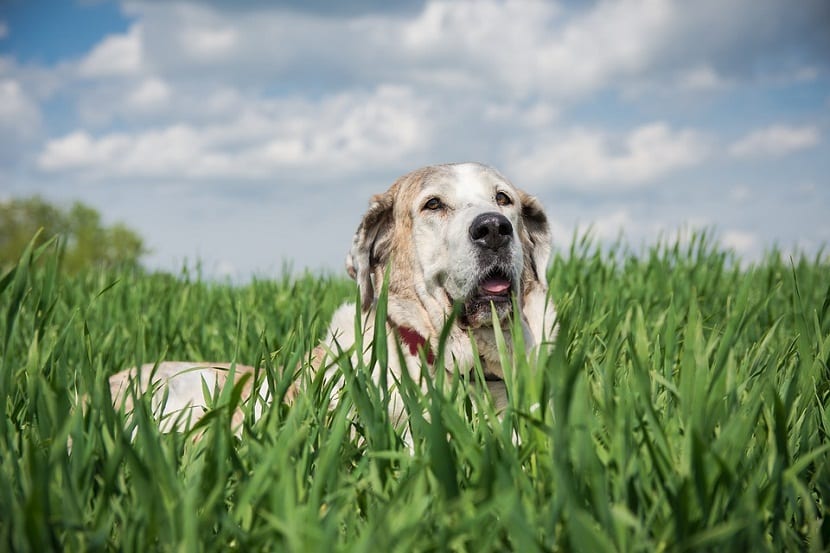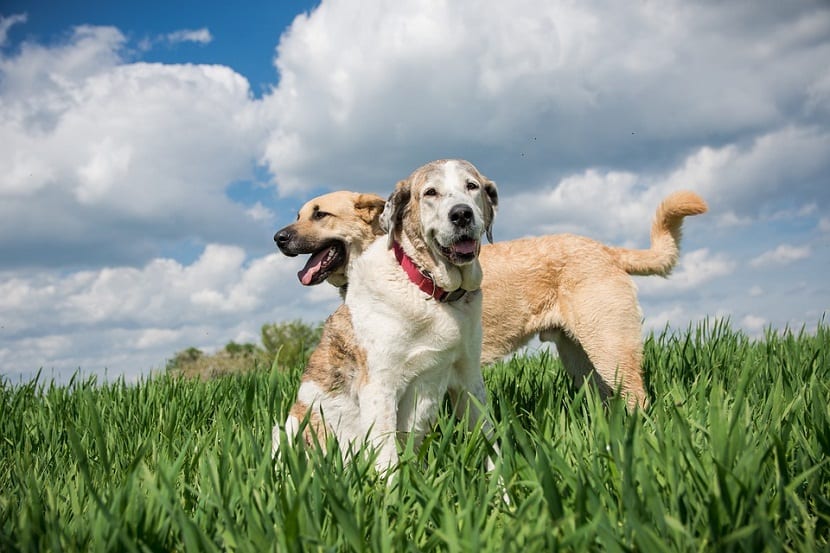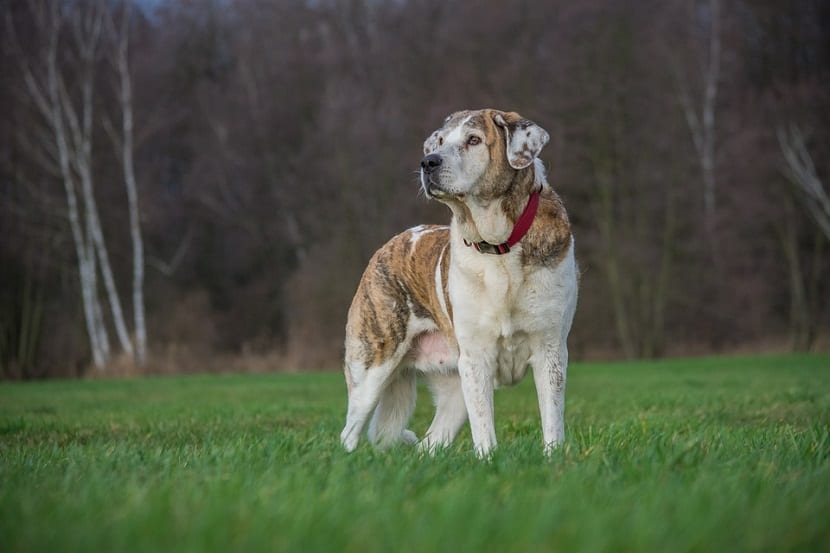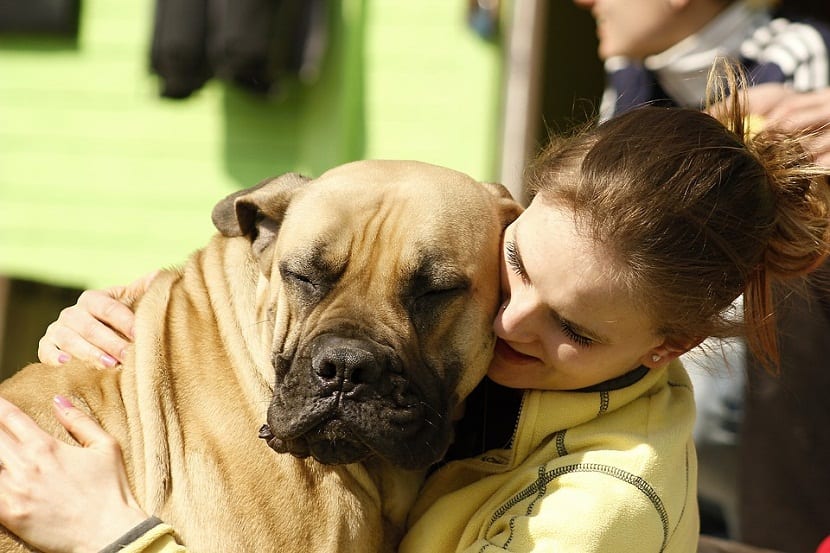
This breed is considered unique for its brave and affectionate aptitude towards its owners, being very good as a guard dog, so it is used to store large estates. Its usefulness derives from the fact that it is highly recommended as a dog to keep company due to its attributes.
During centuries, the mastiff has accompanied the flocks of sheep defending cattle from wolf attack. Are you passionate about this breed? Then keep reading this article to find out about the most important aspects related to this issue.
Features

As we have already mentioned, its function is purely protective. It is also known by other names depending on the geographical region where it is located, one of them is a cattle dog.
It is interesting that you know something about the history of this noble race and that is that in 1981 the Spanish Association of the Spanish Mastiff Dog.
This association had the idea of organizing a program to collect information on this breed in old times. That is why he drew up a new pattern with the aim of recovering all the information referring and pertinent to the old cattle dogs.
They have the attributes that define them and give them identity, that is, that They are breeds that can be used for both pets and guard dogs.
We will summarize below some of the qualities and attributes that make it really attractive:
It is characterized by being a large dog, really robust, very powerful and with a lot of muscles. It is said of this that It is the largest breed seen in Spain.
It is a very distrustful race, of great firmness in front of strangers and very sure of himself. Its fur is dense and has a kind of woolly hair that gives the appearance of an undercoat, which it loses in summer.
As for their color, white, black and brindle are more common. Their length is 60 and 80 cm depending on whether they are male or female. The weight ranges between 40 and 70 kilos although they can possibly reach 90 kg.
They are often used to care for livestock as well as farms and properties. As usual, they are quite balanced, which characterizes them as good companion dogs. The average life expectancy is between eight and ten years and regarding the environment it can be said that it fits very well in families, in a rural environment, grazing and / or surveillance.
It can be said of him that he is one of the largest breeds that Spain has. There are doubts regarding its origin and provenance, but there are historical data that are close to reality; came to the country through the Phoenicians and Celts and they were used by the Romans as fighting dogs.
What there is no doubt is that in the Middle Ages their usefulness was centered as guardians of herds. In general, its attributes are those of a breed quite agile, strong, and capable of defending the herds from other animals if you feel threatened.
Care

The Spanish Mastiff dog is strong, big and corpulent. Its legs are agile, heavy and strong. It has a very large head, floppy ears and the skin of its face hangs over the eyes and cheeks.
The whole body is covered with a very thick hair. As for color, the most common are solid colors and brindle.
Its maintenance is easy and requires a lot of exercise, so it is advisable to live in a big house. Do not neglect his anxiety due to lack of exercise.
Brushing is recommended to remove all traces of dirt and dead hair. Check after each outing for fleas and ticks and when you bathe him take care of his ears.
Being a breed of robust size, it watches out for diseases such as hip dysplasia. You must eat a balanced diet, with essential nutrients for good digestion; take care of his vaccinations and that he attends the vet regularly.
You should also deworm it to the extent that the specialist recommends it. The parasites feed on part of your body, causing direct injuries that can lead to diarrhea, weight loss, vomiting and even the intestinal tube can be stopped.
You only have to take into account a correct and adequate deworming with drugs specifically designed for pets.
This breed requires a somewhat high caloric intake due to its large size, as well as an exercise inherent to its robust shape, so its maintenance is a priority and all the precise recommendations must be followed.
Depending on whether it is still a puppy, it is recommended that its food intake be of small portions and at different times at least three times a day, and not when the animal wants, is to accustom him to a discipline in his eating habits.
Likewise and within the suggestions it is good that you eat antioxidants, as they are essential to keep the coat in good condition. In the same way, supply him with all those proteins and foods that protect his joints.

As they have a problem with obesity, you have to watch their weight and any other food imbalance. Also monitor your consultations to the specialist, he will give you a better orientation of how the Mastiff is evolving.
Do not think about exercising it or taking it for walks after meals, it is advisable to wait the precise hours so that it does digestion well, since otherwise it can cause problems.
You should take him out for a walk at least several times a day, is for your health and physical well-being. I can assure you that with this you will control the weight and good digestion of your dog.
Hygiene
Protect him from parasites, establish the vaccination schedule with your veterinarian. This breed requires a lot of attention, feeling alone or not being offered affection can cause it to react negatively and even lead to psychological problems.
One of the health problems presented in this issue is the hip dysplasia, which may cause you some pain and you may even limp. You already know that you can alleviate it with exercise, sports, food and walks.
Watch out for stomach twisting problems. If you take care that the food intake is in small portions several times a day, you will keep their health and well-being at bay.
The Spanish Mastiff therefore It is a large, strong dog, very faithful to its masters and very affectionate with children.